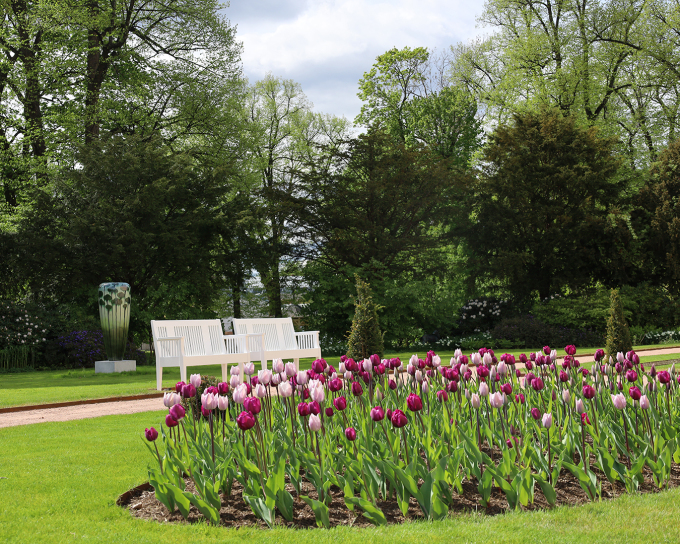The Garden Section
The Garden Section is responsible for the operation and upkeep of the Palace Square, the Palace Park with the Queen’s Park, and the parks at Bygdø Royal Farm and Oscarshall as well as the private estates.
Upkeep of the parks consists of regular maintenance including planting and tidying, care and pruning of the valuable old trees, and maintenance of pools and paths.
The gardeners also work to highlight different eras in the park's long history. In 2021, the formal garden outside the Palace's southern entrance was recreated, enabling visitors to stroll along the flower beds as they were around 1920.
After garden archeological investigations, the gravel walkways at Oscarshall Summer Palace were rearranged to help recreate the romantic park from its establishment.
Between 2003 and 2007, the historic park complex at Bygdø Kongsgård was restored, returning it to the original design it was given in Queen Maud’s time.
Green operations
In recent years, the Garden Section has taken a variety of steps to implement environment-friendly operations. While machines are still important in the upkeep of the parks, the use of fossil fuel has been reduced. Electric machinery has been widely introduced, and the gardening staff uses electric vehicles in its daily activities around the parks.
In the 1950s, pesticides were used to keep weed growth at bay. Today the approach is different. Instead of trying to beat nature, the gardening staff is choosing to work with it. There are many ways to combat weeds; one method is to plant vegetation that prevents weeds from growing or seek to re-create a more natural landscape.
Perennials and meadows
The gardening staff is planting more perennials as opposed to summer flowers, which must be replaced each year. Lawn areas that needed weekly mowing have been turned into meadows that are cut twice a season. This makes it possible to save both time and fuel. It also gives the park a richer landscape and increases biodiversity, as the meadow plants provide food and habitats for many types of bugs and insects.
The meadow areas in the Palace Park are as big as five soccer pitches. Photo: Liv Osmundsen, The Royal Court.
Leaves as a resource
Each autumn, the 1 000 trees in the Palace Park shed their leaves. Much of this is shredded where it falls, becoming food for earthworms and enhancing soil structure. Blowers are used to move leaves away from the roads and paths and into the perennial beds, where they provide good insulation for the winter. Most of the fallen leaves are composted at the Oslo municipal waste facility. The resulting compost soil is then brought back to the Palace Park.
Many of the trees in the Palace Park lose their leaves in the autumn. This involves a lot of work for the gardening staff, but is also an important resource. Photo: Liv Osmundsen, The Royal Court.
Environment-friendly methods and green choices are given priority. The goal is to achieve sustainable management and promote biodiversity.
Organisation
The Garden Section is part of the Department of Royal Estates and Parks and is headed by Palace Gardener Maria Kyhn.




 Enlarge
Enlarge






